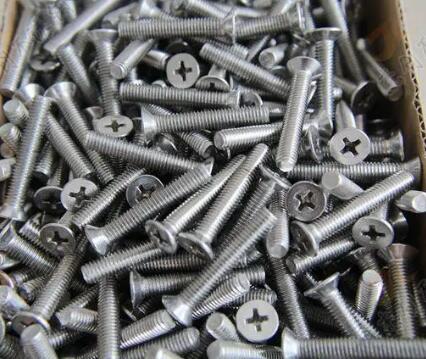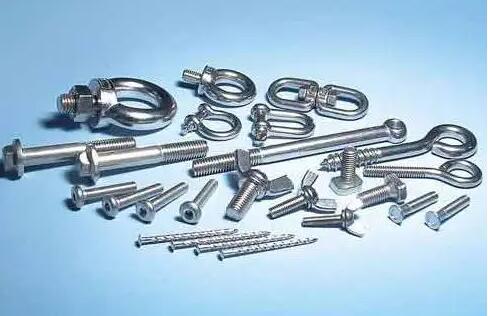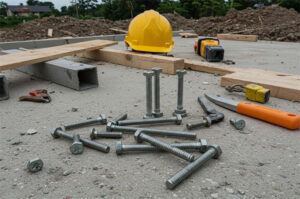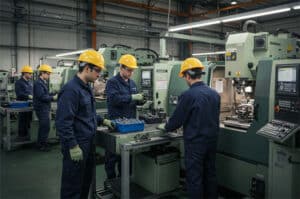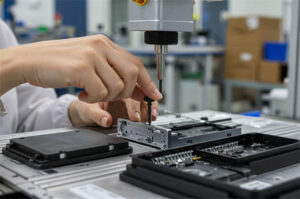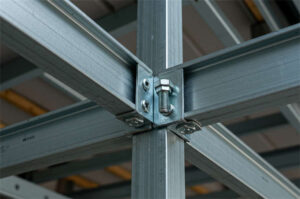Top 10 Self-Tapping Screw Manufacturer in China
When choosing fasteners, you should determine the category and assess its variety and specifications.
Before determining its varieties and specifications, fasteners should be selected first.
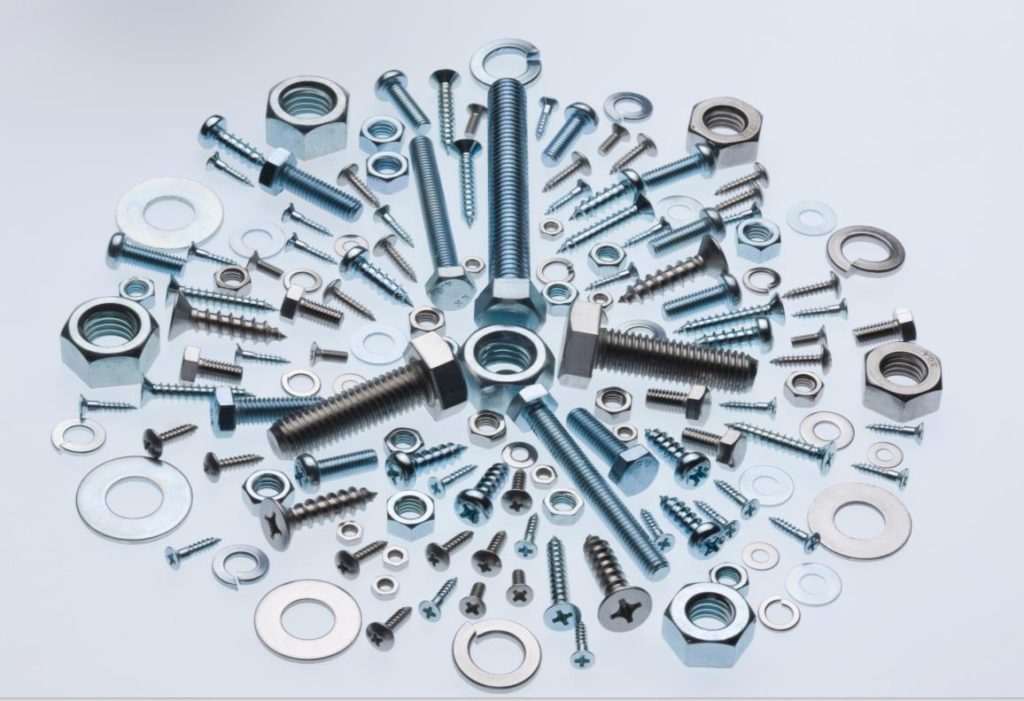
1. Determine the fastener category
Standard fasteners are divided into 12 categories, which are determined according to the application and function of fasteners.
(1) Bolts are widely used in detachable connections and are generally used in conjunction with nuts (usually plus one or two washers).
(2) Use nuts and bolts.
(3) Screws are usually used alone (sometimes with washers), generally for tightening or tightening, and should be screwed into the internal thread of the body.
(4) Studs Studs are mainly used in places with a large thickness of the connecting joint, compact structure or frequent disassembly. Studs are usually threaded at both ends (single-ended studs are single-ended threads). Usually, one end is threaded firmly into the body of the part, and the other is matched with the Nut, which acts as a connection and fastening, but largely There are also fixed distances.
(5) Wood screws are used to screw into the wood to connect or fastener suppliers.
(6) The working screw holes that match the self-tapping screw and the self-tapping screw do not need to be tapped in advance, and the self-tapping screw is screwed in simultaneously to form an internal thread.
(7) Place washers and washers on bolts. Use screws, nuts, etc., between the support surface and the workpiece support surface to prevent loosening and reduce the stress of the support surface.
(8) The retaining ring is mainly used to locate the parts in the shaft or hole. Lock or stop.
(9) Sales are usually used to locate, connect or lock parts and as overload shear elements in safety devices.
(10) Rivet The rivet has a head at one end, and the rod is unthreaded. When in use, the rod is inserted into the hole of the connector, and then the end of the rod is riveted to play the role of connection or fastening.
(11) Connection pair The connection pair combines screws, bolts, self-tapping screws, and washers. After the screw is installed, the washer must be able to rotate freely on the screw (or bolt) without falling off. Mainly play the role of fastening or fastening.
(12) Other contents mainly include welding studs, etc.
2. Determine the variety of fasteners
(1) Principles of fastener variety selection
①From processing.
onsidering the work efficiency of assembly, in the same machinery or engineering, the use of fasteners should be minimized;
②The variety of commodity fasteners should give priority to economic considerations.
③According to the expected user requirements and types of fasteners. Mechanical properties. Select the accuracy and thread of the variety.
(2) Fastener type
①Bolt
a) General purpose bolts: There are wide varieties, which can be divided into hexagonal heads and square heads. According to the manufacturing accuracy and product quality, hexagon head bolts are very common in product grades such as A.B.C. The A and B levels are the most widely used, mainly for important places with high assembly accuracy, large shock, vibration or load changes. According to the head’s support area and the installation position’s size, the hexagon head bolts can be divided into hexagon head and large hexagon head; when locking is required, head or screw types with holes should be used. The square head size and stress surface of the square head bolt is large, which is convenient for the wrench mouth to be stuck or to stop the rotation by other parts. It is usually used for rugged constructions and sometimes to loosen and adjust the position of bolts in slots. GB8.GB5780~5790 etc.
b) Reaming bolt: When using, insert the bolt tightly into the reaming hole to prevent the workpiece from dislocating GB27, etc.
c) Anti-rotation bolt: square neck. With tenon points, see GB12~15, etc.;
d) Special purpose bolts include T-slot, joint, and anchor bolts. T-slot bolts are mainly used where frequent disassembly and connection are required; anchor bolts are used to fix frames or motor bases in concrete foundations. GB798.GB799, etc.;
e) The steel structure adopts high-strength bolt connection pair: generally used for frictional connection of steel structures such as buildings, bridges, towers, pipeline supports, and hoisting machinery, see GB3632, etc.
② Nut
a) General purpose nuts: a wide variety, including hexagonal nuts, square nuts, etc. Hexagon nuts are most commonly used in hexagon bolts and are classified into hexagon bolt A.B.C grades according to manufacturing accuracy and product quality. The thin hexagonal Nut is used as the auxiliary Nut of the anti-loosening device, which plays a locking role, or is used where the threaded connection pair is mainly subjected to shearing force. Hexagonal thick nuts are mainly used for connections that are dismantled frequently. The square Nut is matched with the square bolt, the wrench is not easy to slip, and it is mostly used for roughness. The structure is simple GB41.GB6170~6177, etc.;
b) Slotted Nut mainly refers to the hexagonal slotted Nut, processed above the hexagonal Nut. It is used with screw hole bolts and cotter pins to prevent relative rotation of bolts and nuts GB6178~6181 etc.;
c) Lock nut: refers to the Nut with locking function, including nylon insert hexagonal lock nut and all-metal hexagonal lock nut. The hexagonal nylon-tight Nut has a very reliable anti-loosening property between -60 and 1000 °C. Under certain medium conditions, the bolts and connectors are not damaged and can be loaded and unloaded frequently. GB889.GB6182~6187, etc.;
d) Special purpose nuts: such as wing nuts, cap nuts, rolling nuts and embedded nuts, etc. Butterfly nuts can usually be removed without tools and are typically used where frequent removal and little force are required; cap nuts are required for end screws.
GB62.GB63.GB802.GB923.GB806.GB807.GB809 etc.
③Screw
a) Machine screws: The different head types and groove types can be divided into various types. The head type includes cylindrical head, pan head, countersunk head and semi-sink head. The head groove is generally slotted (slotted). Cross groove and inner hexagonal groove. The cross-recessed screw has good neutrality when tightening, the head strength is greater than the slot, and it is not easy to be bald. It is generally used for mass production. Hexagon socket head screw. The socket head screw can apply a large tightening torque, the connection strength is high, the head can be buried in the body, and a tight and smooth connection is required. GB65.GB67~69 and GB818~820, etc.;
b) Fastening screws: Fastening screws are used as the relative position of the fixture, and the head has a word groove. Hexagon and square head types. The equitable charge can apply a large tightening torque, the top has a large tightening force, and it is not easy to be bald, but the size of the head is large, it is not convenient to be buried in the parts, and it is not safe, especially the moving parts should not be used. There is a word slot. The inner hexagon is easy to sink into the region. According to different requirements, the most commonly used how screw made ends are cone, flat, and cylindrical. There are three types. Cone end is suitable for parts with low hardness; when using non-pointed conical end screws, drill holes on the top surface of the details, and then press the conical surface on the edge of the hole. The end is a flat-end screw with a large contact area and will not damage the part’s surface after tightening. It is used to tighten a plane with high hardness or adjust the position regularly. The screw at the cylindrical end does not damage the part’s surface and is mainly used to fix the component installed on the tube shaft (thin-walled part). The hole type of the cylindrical end into the post allows greater load transfer through the shear resistance of the cylindrical end. GB71.GB73~75.GB77~78, etc.;
c) Hexagon socket head cap screws: The socket head cap screws are suitable for occasions where the installation space is small, or the screw head needs to be buried. GB70.GB6190~6191 and GB2672~2674, etc.;
d) Special purpose screws: such as positioning screws, captive screws and lifting ring screws; see GB72.GB828~829.GB837~839.GB948~949 and GB825, etc.
④Stud
a) Unequal length of studs: suitable for occasions where one end is screwed into the body of the component for connection or fastening, see GB897~900;
b) Equal-length studs: suitable for connection or distance between two ends and nuts. GB901.GB953, etc.
⑤Wood screws
Due to the different head shapes and groove shapes, it is divided into wide varieties. The head shape has a round head. Countersunk head. Semi-sunk head and so on. There are two types: slotted (slotted) and cross-slotted. GB99~101.GB950~952.
⑥Self-tapping screws
a) Ordinary self-tapping screw: the thread conforms to GB5280, the pitch is large, and it is suitable for thin steel plates or copper. Aluminum. Use plastic; see GB845~847, GB5282~5284, etc.;
b) Self-tapping locking screw: The thread conforms to the common coarse thread, which is suitable for occasions requiring anti-vibration. GB6560~6564.
⑦Gasket
a) Flat gasket: used to overcome the unevenness of the workpiece’s support surface and increase the support surface’s stress area. GB848.GB95~97 and GB5287;
b) Spring (elastic) gaskets: elastic and oblique friction spring gaskets to prevent loosening of fasteners, widely used in frequently disassembled joints. Internal Tooth Resilient Washers. The external Tooth Resilient Washers have many sharp elastic warping teeth around them to keep fasteners from loosening. The inner tooth elastic washer is used under the screw head with the smaller head, and the outer tooth elastic washer is used under the bolt head and the Nut. The toothed elastic washer is smaller than the ordinary spring washer, and the fastener force is even. It is also reliable to prevent loosening, but it should not be used in places where it is frequently disassembled. GB93.GB859~860 and GB955;
c) Non-return washers: There are internal tooth lock washers, external tooth lock washers, single-ear stop washers, double-ear stop washers and round nuts with stop washers, etc. Single and double lug stop washers allow the Nut to be tightened and locked in any position, but the fasteners should be close to the edge. GB861~862.GB854~855.GB858, etc.;
d) Oblique washers: To adapt to the slope of the working support surface, inclined washers can be used. Square inclined washers are used for channel steel. The inclined surface, such as an I-beam flange, makes the nut support surface perpendicular to the nail rod to avoid the bending force of the drywall screw collated when the Nut is tightened. GB852 ~ 853 and so on.
⑧ Retaining ring
a) Retaining ring: The shaft and the hole are stuck in the shaft groove or hole groove with an elastic retaining ring for the rolling bearing to stop using after installation. In addition, an open retaining ring on the shaft is mainly used for positioning parts stuck in the shaft groove but cannot bear axial force. GB893~894 and GB896;
b) Wire retaining ring: There are holes (for shaft), wire retaining ring, and wire locking ring. The steel wire retaining ring is installed in the shaft groove or hole groove, which is used to position parts and can also bear a certain axial force. GB895.1~.2.GB921;
c) Shaft-type parts locking retaining ring: the retaining ring locked by the taper pin and the retaining ring locked by the screw is mainly used to prevent the axial movement of the parts on the shaft. GB883~892.
d) Shaft end retaining ring: The shaft end retaining ring is fixed with screws, and the shaft end retaining ring fixed by bolts is mainly used to lock the parts set on the shaft end. GB883~982.
⑨pin
a) Cylindrical pins: Cylindrical pins are mainly used for fixed parts on shafts to transmit power or as positioning elements. Cylindrical pins have different diameter tolerances and can be used for additional cooperation requirements. Cylindrical pins are usually held in the hole by a surplus and are therefore not suitable for removal. GB119~120.GB878~880, etc.;
b) Tapered pin: The tapered pin has a taper of 1:50, which is easy to install to the eye and can also ensure self-locking. It is usually used as a positioning and connecting element, mainly in places requiring frequent disassembly. Internally threaded taper pins and threaded tail taper pins are used for holes that are not threaded or where pins are difficult to make. When the split tapered pin enters the hole, the end can be opened to prevent the pin itself from slipping out of the hole. GB117~118.GB881 and GB877 etc.
The pin holes of cylindrical pins and various tapered pins generally require reaming. After repeated assembly and disassembly, the positioning accuracy and connection tightness will be reduced, and only a small load can be transmitted. The elastic cylindrical pin itself is adjustable, installed in the hole to maintain tension, not easy to loosen, easy to disassemble, and does not affect the matching performance. Pin holes do not need to be hinged. The hinge connection adopts a hole pin and pin shaft;
c) Cotter pin: Cotter pin is an anti-loosening device for connecting parts inserted into the Nut when used. The feet are separated in the bolt with a pinhole or the pinhole of other connectors. GB91.
⑩Rivets
a) Hot forging rivets: generally larger, mostly used in locomotives. Ships and boilers usually need to be hot forged to form the head. GB863~866;
b) Cold heading rivets: the general diameter is 16mm, and the head is usually formed by cold heading, see GB867~870.GB109, etc.
c) Hollow and semi-hollow rivets: Hollow rivets are used for small shear force, usually used to connect plastic, leather, wood, and non-metal parts, such as canvas.

